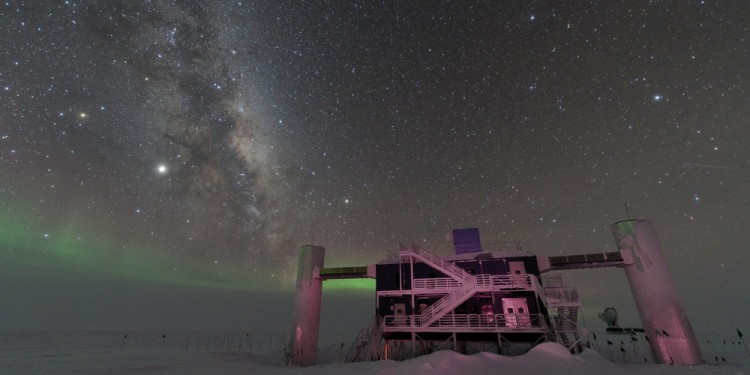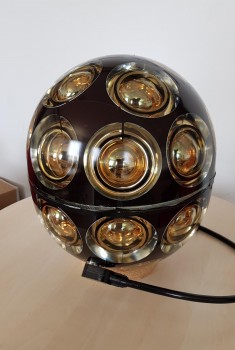
Hunting for "ghost particles": Neutrino observatory at the South Pole will be extended
For almost ten years, scientists from all over the world have been using the large-scale experiment "IceCube" to search for neutrinos in the permanent ice of the South Pole. Neutrinos are the smallest particles that reach Earth as cosmic rays. Now the participating researchers, among them Prof. Alexander Kappes from the University of Münster, are pleased about a huge upgrade of the laboratory, which should contribute to measuring the properties of neutrinos much more accurately than before. The upgrade project is expected to cost 37 million US dollars, largely provided by the US National Science Foundation. The Federal Ministry of Education and Research (BMBF) is also funding the expansion. Research groups from nine German universities and two Helmholtz Centres specialising in astrophysics, the DESY and the Karlsruhe Institute of Technology (KIT), are participating in the IceCube project.
Among other things, neutrinos are produced during nuclear fusion inside the sun. Around 60 billion solar neutrinos fly through an area the size of a human thumbnail every second, but without leaving any trace. The detection of these "ghost particles" is extremely time-consuming and requires special detectors to detect at least some of the rare reactions. For the IceCube detector, researchers have therefore drilled holes in Antarctic ice, each 2,500 metres deep, and sunk light sensors there to measure the tiny flashes of light produced by the rare neutrino reactions in the ice.
IceCube already contains more than 5,000 individual sensors that measure such light signals. As part of the planned upgrade project, seven additional strings equipped with optical sensors will be installed in the middle of the existing 86 strings in deep ice. This will add 700 improved sensors being installed in the Antarctic summer of 2022/23.
Development of optical sensors at Münster University

Neutrinos come in three flavours: electron, muon and tau neutrino. Surprisingly, the particles can switch back and forth between these. Physicists call this neutrino oscillation. One of the goals of the IceCube upgrade is to determine the parameters of neutrino oscillations with much higher precision than currently possible. A further goal is to measure the optical properties of the ice more precisely, which allows a better reconstruction of the properties of observed neutrinos in all energy ranges.
The research centres DESY and KIT are funding the subproject with 5.7 million euros for 430 "mDOMs" and are assembling them. “The IceCube upgrade will not only improve neutrino astronomy, but also our knowledge about neutrino itself,” says DESY scientist Timo Karg, project leader for the optical sensors in the IceCube upgrade. “We have already collected data with IceCube for ten years, and the upgrade will considerably enhance this data.”
“With the IceCube upgrade and the later expansion to IceCube-Gen2, this unique neutrino observatory expands our view into space at a crucial point and thus contributes to solving the puzzles about the physics of the highest energy processes in our universe,” says Andreas Haungs, head of the IceCube group at KIT.
About the IceCube project:
The IceCube Neutrino Observatory is located at the Amundsen-Scott South Pole Station. The observatory is managed and operated by the Wisconsin IceCube Particle Astrophysics Center at the University of Wisconsin-Madison. The scientific program is conducted by the international IceCube collaboration with more than 300 scientists from 52 institutes in twelve countries. After the USA, Germany is the most important partner for IceCube. Here the Universities of Aachen, Berlin (Humboldt University), Bochum, Dortmund, Erlangen-Nürnberg, Mainz, Munich (Technical University), Münster and Wuppertal, as well as the Helmholtz Centres DESY and the Karlsruhe Institute of Technology (KIT) are involved.
